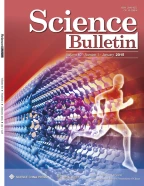Abstract
Maximum light use efficiency (ε max) is a key parameter for the estimation of net primary productivity (NPP) derived from remote sensing data. There are still many divergences about its value for each vegetation type. The ε max for some typical vegetation types in China is simulated using a modified least squares function based on NOAA/AVHRR remote sensing data and field-observed NPP data. The vegetation classification accuracy is introduced to the process. The sensitivity analysis of ε max to vegetation classification accuracy is also conducted. The results show that the simulated values of ε max are greater than the value used in CASA model, and less than the values simulated with BIOME-BGC model. This is consistent with some other studies. The relative error of ε max resulting from classification accuracy is −5.5%–8.0%. This indicates that the simulated values of ε max are reliable and stable.
Similar content being viewed by others
References
Raymond, E., Hunt, J. R., Relationship between woody biomass and PAR conversion efficiency for estimating net primary production from NDVI, International Journal of Remote Sensing, 1994, 15: 1725–1730.
Ruimy, A., Saugier, B., Methodology for the estimation of terrestrial net primary production from remotely sensed data, Journal of Geophysical Research, 1994, 97: 18515–18521.
Goetz, S. J., Prince, S. D., Remote sensing of net primary production boreal forest stands, Agricultural and Forest Meteorology, 1996, 78: 149–179.
Paruelo, J. M., Epstei, H. E., Lauenroth, W. K. et al., ANPP estimates from NDVI for the central grassland region of the United States, Ecology, 1997, 78(3): 953–958.
McCrady, R. L., Jokela, E. J., Canopy dynamics, light interception, and radiation use efficiency of selected loblolly pine families, Forest Science, 1998, 44(1): 64–72.
Peng, S. L., Guo, Z. H., Wang, B. S., Use of GIS and RS to estimate the light utilization efficiency of the vegetation in Guangdong, China, Acta Ecologica Sinica (in Chinese), 2000, 20(6): 903–909.
Potter, C. S., Randerson, J. T., Field, C. B. et al., Terrestrial ecosystem production: a process model based on global satellite and surface data, Global Biochemical Cycle, 1993, 7: 811–841.
Field, C. B., Randerson, J. T., Malmström, C. M., Global net primary production: Combining ecology and remote sensing, Remote Sensing of Environment, 1995, 51: 74–88.
Field, C. B., Behrenfeld, M. J., Randerson, J. T. et al., Primary production of the biosphere: integrating terrestrialand oceanic components, Science, 1998, 281: 237–240.
Piao, S. L., Fang, J. Y., Guo, Q. H., Application of CASA model to the estimation of Chinese terrestrial net primary productivity, Acta Phytoecologica Sinica (in Chinese), 2001, 25(5): 603–608.
Running, S. W., Thornton, P. E., Nemani, R. et al., Global terrestrial gross and net primary productivity from the earth observing system, in Methods in ecosystem science (eds. Sala, O., Jackson, R., Mooney, H.), New York: Springer Verlag, 2000, 44–57.
Pan, Y. Z., Gong, D. Y., Deng, L. et al., Smart distance Searching-based and DEM-informed interpolation of surface air temperature of climatology in China, Acta Geographica Sinica (in Chinese), 2004, 59(3): 366–374.
Ni, J., Zhang, X. S., Scurlock, J. M. O., NPP Multi-Biome: Chinese Forests Data, 1989–1994, Available on-line [http://www.daac.ornl.gov/] from Oak Ridge National Laboratory Distributed Active Archive Center, Oak Ridge, Tennessee, U.S.A., 2001.
Raich, J. W., Rastetter, E. B., Mellillo, J. M. et al., Potential net primary productivity in South America: Application of a global model, Ecological Applications, 1991, 1: 399–429.
Scurlock, J. M. O., Cramer, W., Olson, R. J. et al., Terrestrial NPP: Towards a consistent data set for global model evaluation, Ecological Applications, 1999, 9(3): 913–919.
Zhu, W. Q., Chen, Y. H., Pan, Y. Z. et al., Estimation of light utilization efficiency of vegetation in China based on GIS and RS, Geomatics and Information Science of Wuhan University (in Chinese), 2004, 29 (8): 694–698.
Hatfield, J. L., Asrar, G., Kanemasu, E. T., Intercepted photosynthetically active radiation in wheat canopies estimated by spectral reflectance, Remote Sensing of Environment, 1984, 14: 65–75.
Sellers, P. J., Canopy reflectance, photosynthesis, and transpiration, International Journal of Remote Sensing, 1985, 6: 1335–1371.
Huemmrich, K. F., Goward, S. N., Spectral vegetation indices and the remote sensing of biophysical parameters, in Proceeding of International Geoscience and Remote Sensing Symposium (IGARSS), Institute of Electrical and Electronics Engineers, Houston, Texas, 1992, 1017–1019.
Los, S. O., Justice, C. O., Tucker, C. J., A global 1° by 1° NDVI dataset for climate studies derived from the GIMMS continental NDVI data, International Journal of Remote Sensing, 1994, 15: 3493–3518.
Sellers, P. J., Randall, D. A., Collatz, J. A. et al., A revised land-surface parameterization (SiB2) for GCMs, Part 1: Model Formulation, Journal of Climate, 1996, 9: 676–705.
Jin, X. H., Liu, H. G., Song, Y. C., Study on the productivity of shrubbery in Yi County, Southern Anhui Province, Acta Phytoecologica et Geobotanica Sinica (in Chinese), 1990, 14(3): 267–273.
Chen, X. L., Ma, Q. Y., Kang, F. F. et al., Studies on the biomass and productivity of typical shrubs in Taiyue Mountain, Shanxi Province, Forest Research (in Chinese), 2002, 15(3): 304–309.
Tang, J. W., Zhang J. H., Song, Q. S. et al., Biomass and net primary productivity of artificial tropical rainforest in Xishuangbanna, Chinese Journal of Applied Ecology (in Chinese), 2003, 14(1): 1–6.
Liu, J. H., Xu X. X., Yang, G. et al., Study on biomass of secondary shrubbery community in small watershed of Loess Hill and Gully Region, Acta Botanica Boreal Occident Sinica (in Chinese), 2003, 23(8): 1362–1366.
Fan, J. W., Zhong, H. P., Liang, B. et al., Carbon stock in grassland ecosystem and its affecting factors, Grassland of China (in Chinese), 2003, 25(6): 51–58.
Author information
Authors and Affiliations
Corresponding author
About this article
Cite this article
Zhu, W., Pan, Y., He, H. et al. Simulation of maximum light use efficiency for some typical vegetation types in China. CHINESE SCI BULL 51, 457–463 (2006). https://doi.org/10.1007/s11434-006-0457-1
Received:
Accepted:
Issue Date:
DOI: https://doi.org/10.1007/s11434-006-0457-1
